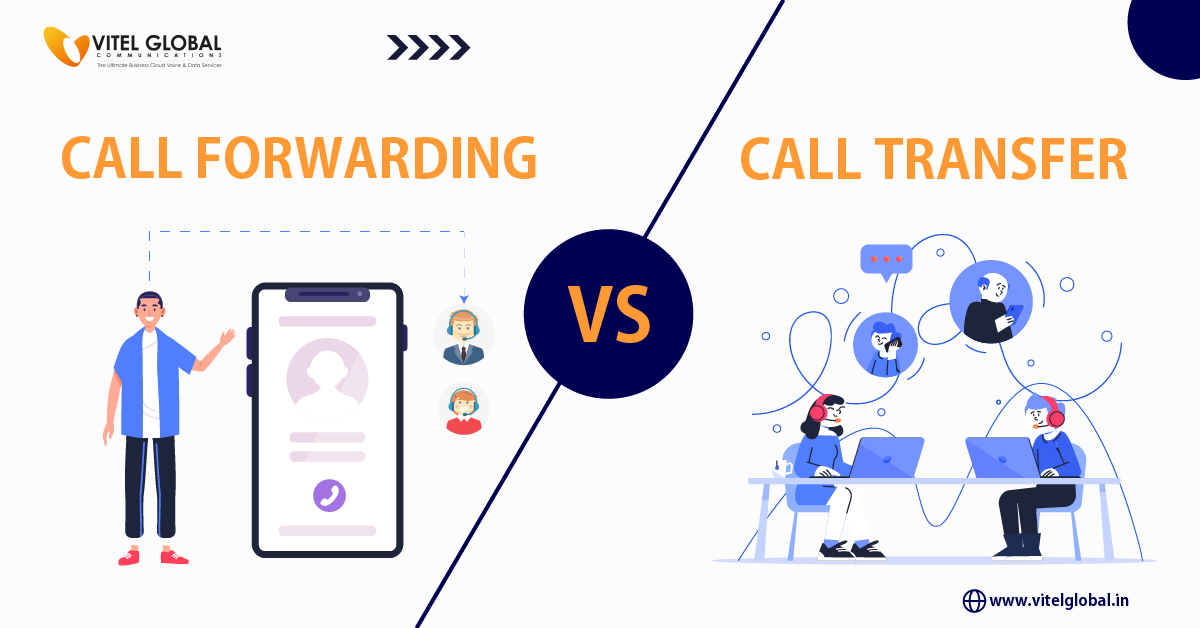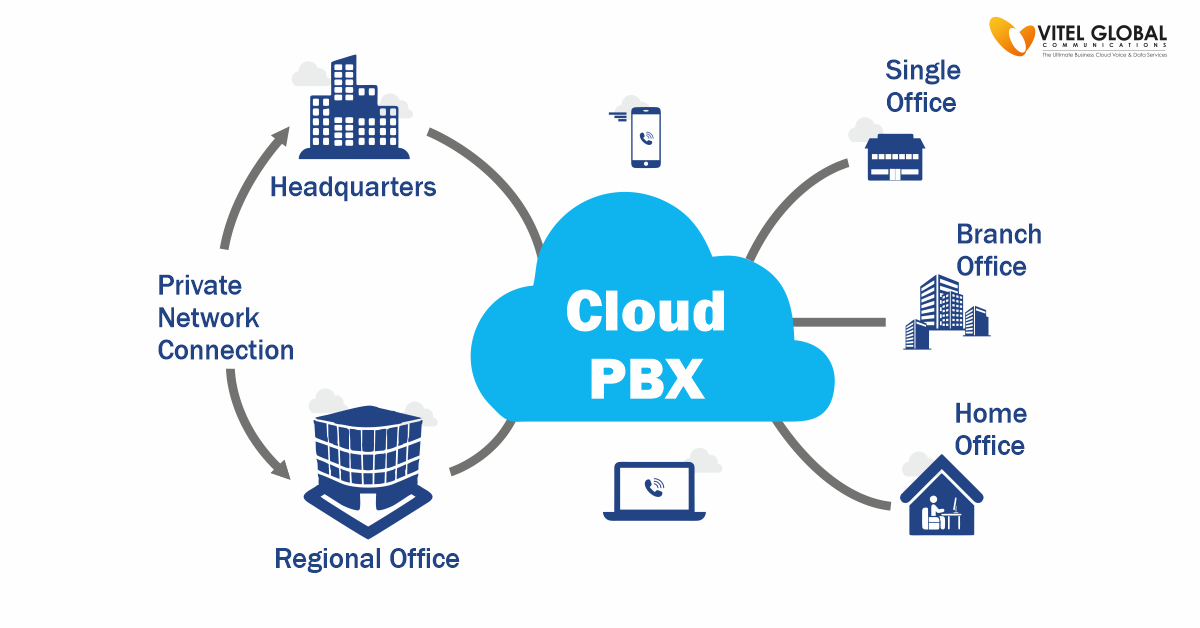Table of Contents
In the communications industry, understanding jargon can be challenging for those not familiar with it. One common question from our clients is the distinction between call forwarding and call transferring. The key difference lies in their functionality.
Every successful business is built on a foundation of satisfied customers. Every day, hundreds of new companies pop up, and consumers are the only ones who get to pick the brands they want. In the journey to achieve long-term success, it is essential to guarantee customers’ desires.
During busy times, many consumers and clients come into your establishment. Real leads start contacting you at this time as well. Your leads and clients will quickly escape your grasp if you don’t care for them.
Several options are available to handle a high volume of calls during peak hours to prevent this loss. And of all of them, call forwarding and call transfer are the two that are most important.
Although they both seem and sound the same, they are distinct. Each one has a niche and is useful for problem-solving in particular circumstances.
So what exactly is the difference between call forwarding and call transfer? Which one should you trust with your company? And why do they matter so much to a cloud telephony system? In this essay, we will go through everything.
What is Call Forwarding?
Your incoming calls can be forwarded to voicemail or another number using the call-forwarding feature of a telephone system. Call diverting is another name because it switches calls from one number to another.
Call forwarding rules must be defined to determine when and where a call should be diverted. Forwarded calls frequently occur due to busy, unanswered, or inaccessible lines.
Calls are transferred from the host to the connected number under the forwarding rules. Following the call order settings, it also rings the connected phone consecutively or simultaneously.
If your phone cannot be reached, the calls are terminated or diverted to voicemail.
How Does Call Forwarding Work?
A call can be forwarded to a different phone number by using call forwarding. When the host number is not reachable for some reason, it just diverts the calls.
The host number can only be reached if you have set call forwarding for all incoming calls.
With time, the call-forwarding function becomes classier. Nowadays, you may personalize anything, even the user’s forwarding extension, and the greeting message.
Your phone makes an outgoing call to the predetermined destination number during call forwarding.
The call from your caller and your call to the destination are combined during forwarding, omitting you from the call. So the caller won’t detect a difference.
Call forwarding can be done in several methods based on the telecommunication service. Some of the preferences you can use while forwarding calls are listed below.
- Ringing Time
To allow quick response, you can adjust the number or duration of the rings. Therefore, if your employees were on duty, they would promptly answer the calls.
You can send calls to the next employee if they are busy and unable to answer. It raises the likelihood that consumers’ calls will be returned before they hang up.
- Unanswered Calls
If the host number doesn’t answer the calls, this call-forwarding option forwards them to the destination number. This option may be useful if you like to give yourself the entire ring time to react.
The host phone forwards call only when it has rung continuously with this option. This alternative might be less appealing because callers must wait long to speak to an operator.
- Unreachable Lines
Sometimes, it may be impossible to reach your phone number due to weakened signals or a cable connection issue. You may miss several calls in a brief period if it occurs during a busy business hour. In such a case, the call forwarding option will be useful to prevent missed calls.
In these circumstances, you can forward the calls to the lines with the best reliability—those least susceptible to signal degradation and cable breakage. As a result, whenever you are unavailable, a different representative is always available to take your calls.
- Forwarding in Sequence
As a customer support representative, you might have to handle specific questions or complaints. Customers might choose to speak with you over your coworkers.
This rule enables you to forward calls in the order of the target phone numbers. If your clients need to learn how to contact you directly, it helps to create a bridge between them and you.
To redirect the calls, in addition to using priority and skills, you can also employ sequence-based call forwarding.
- Ringing Simultaneously
You can ring many numbers simultaneously with this forwarding option. Because of this, all devices continue to ring simultaneously until one of the agents answers the call.
If taking the calls rather than who answers them is more important, you can arrange this type of forwarding.
Benefits of Call Forwarding
To deliver top-notch customer care, it is crucial to utilize this useful and effective telephone function to its fullest extent. The following are some advantages of call forwarding:
- Enhances Staff Availability
The caller will probably leave you a voicemail if they can’t reach you. If that continues for a while, you’ll have a huge list of unreturned voicemails. Additional workloads may result from it.
You can transfer your calls to your coworkers so they can answer them if you aren’t accessible via call forwarding. You can transfer the call to your personal or home phone if it is critical.
Your clients can acquire help and assistance when they need it immediately in this manner. Additionally, it enables you to make greater use of the individual who currently works there.
- Facilitates Employee Travel
Working at a desk is one of many options for all employees. Some are in charge of handling desk work and occasionally visiting the locations.
They may need to answer numerous calls while they are away. The call-forwarding feature can be useful for managing calls in certain circumstances.
That way, even when some of your employees are absent, the call volume and the level of client satisfaction will be fine.
What is Call Transfer?
A call transfer is moving a live conversation from one side to another.
It is a technique for diverting an active phone call to another device. Callers can be transferred instead of hanging up and dialing another number if they contact the incorrect department or member of your team.
Allowing a customer service representative to answer calls can also be wise. It calms angry clients by connecting them with a specialist who can solve their issues immediately.
Utilizing the call flow between agents will help to boost worker productivity. You can better serve customers by promptly connecting them with the relevant team members.
Why Do you Need the Call Transfer Feature?
Whether you run a small business or a large organization, it’s helpful to be able to transfer calls. If you don’t use call transfers, there are a few reasons to do so.
- Customers have Easier Access to you
Call transfer enables you to work with coworkers in various departments to assist clients with various inquiries. Customers receive better business VoIP service providers and are happy as a result.
- Increase Flexibility
If your business phone system has call transfer enabled, you can move the original call to your mobile phone or home landline, ensuring you can receive it wherever you are.
- Scalability
Scaling your customer support system is simple by using call transfer. You may always scale it up or down to accommodate any sudden variations in call traffic.
The Difference Between Call Forwarding vs. Call Transfer
A call transfer is moving a live conversation from one side to another. Call transfer is useful when an employee is on the phone, and the caller needs to talk with another agent.
Call forwarding and call transfer have a similar mechanism. However, both work differently. Call forwarding refers to the action of transferring incoming calls from one number to another.
Calls automatically forward to the specified number here, eliminating the need for manual action during call transfers. The basic setup for call forwarding is being unable to answer, inaccessible, or busy lines.
These two effective call management capabilities aim to provide satisfied customers. The main goal of call forwarding is to make consumers available at all times. Contrarily, call transfer aids in matching consumers with the appropriate agent.
Take Away
Call transfer and forwarding are crucial for smooth processes and a positive customer experience. Despite their essential differences, they provide energy to your communication system.
The majority of firms face tough competition every day. So, to stay competitive, you must step up your game with a strong communication system. However, none of the communication methods is completely impervious to failure.
Even if you discover a more dependable channel, it could not be as interesting or appealing as a phone system. To avoid this, you must improve your phone system. Selecting a cloud telephony provider will help you achieve this.
The cloud telephony system requires an internet connection and a softphone app. As a result, it is less susceptible to hardware and mobile network problems. The numerous functions it includes help to offset some of its flaws.
Just take vitel global as an example. You can make virtual calls, and there is cloud backup for all the data. It enables you to handle calls with ease, regardless of call volume.
It includes call forwarding and call transfer capabilities. Numerous more call management features exist, including IVR, automatic call distribution, intelligent call routing, and more. Therefore, it improves the value of your customer support system.
In particular, vitel global is scalable, adaptable, and reasonably priced. You can utilize it without any problems, regardless of the size of your firm. You don’t need to modify or compromise whether you up or downscale your business.








